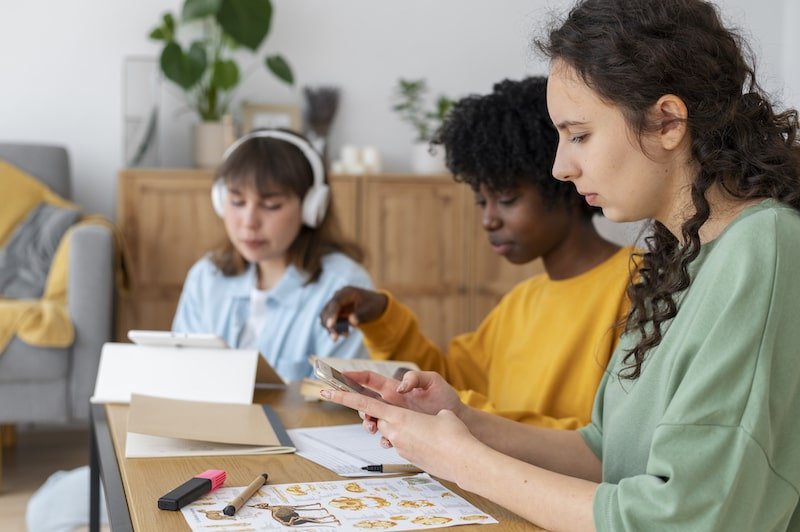
The learning environment plays a crucial role in shaping the academic and personal growth of students. A positive learning environment, characterized by a supportive and inclusive culture, effective communication, engaging instruction, and a focus on social-emotional well-being, can unlock the full potential of students and lead to remarkable outcomes. In this comprehensive guide, we’ll explore the strategies and best practices for creating a positive learning environment that fosters academic achievement, personal development, and overall student well-being.
Understanding the Foundations of a Positive Learning Environment
A positive learning environment is a multifaceted concept that encompasses several key elements. Let’s delve into the foundations of a positive learning environment and the benefits it can bring to students.
Key Elements of a Positive Learning Environment
Supportive and Inclusive Classroom Culture A positive learning environment is built on a foundation of mutual respect, belonging, and a sense of community. It’s essential to promote a culture where all students feel valued, respected, and empowered to participate actively.
Effective Communication and Feedback Clear and open communication between teachers and students, as well as constructive feedback, are crucial for fostering a positive learning environment. This includes setting clear expectations, providing timely and meaningful feedback, and encouraging student self-reflection.
Engaging and Student-Centered Instruction Engaging and student-centered instruction, which incorporates active learning strategies, differentiated approaches, and opportunities for student voice and choice, can significantly enhance the learning experience.
Promotion of Social-Emotional Learning (SEL) Integrating social-emotional learning into the curriculum and classroom practices can help students develop essential life skills, such as self-awareness, self-management, empathy, and responsible decision-making.
Emphasis on Mental Health and Well-being Prioritizing the mental health and overall well-being of students, through the provision of counseling services, stress management resources, and a culture of empathy and understanding, is vital for creating a positive learning environment.
Benefits of a Positive Learning Environment
Improved Academic Performance Students in a positive learning environment tend to demonstrate higher academic achievement, as they are more motivated, engaged, and supported in their learning.
Enhanced Student Motivation and Engagement A positive learning environment fosters a sense of belonging and ownership, leading to increased student motivation, engagement, and active participation in the learning process.
Stronger Teacher-Student Relationships When a positive learning environment is established, teachers and students can develop stronger, more trusting relationships, which can further enhance the learning experience.
Increased Student Confidence and Self-Esteem A supportive and inclusive learning environment can boost students’ confidence, self-esteem, and overall sense of self-worth, empowering them to take risks and embrace challenges.
Reduced Stress and Anxiety By prioritizing mental health and well-being, a positive learning environment can help mitigate stress and anxiety, creating a more conducive atmosphere for learning and personal growth.
Challenges in Creating a Positive Learning Environment
While the benefits of a positive learning environment are clear, there are also challenges that educators may face in its implementation. These include:
- Diverse student needs and backgrounds
- Limited resources and time constraints
- Resistance to change and implementation
Overcoming these challenges requires a comprehensive and collaborative approach, involving all stakeholders, including students, parents, educators, and administrators.
Strategies for Establishing a Positive Learning Environment
To create a positive learning environment, educators can employ a range of strategies and best practices. Let’s explore these in detail:
Fostering a Supportive and Inclusive Classroom Culture
Promoting a Sense of Belonging and Community Encourage students to feel a sense of belonging and community within the classroom by fostering positive relationships, celebrating diversity, and promoting a culture of mutual respect and support.
Encouraging Respectful and Open Communication Establish clear guidelines for respectful communication, where students feel empowered to express their thoughts and opinions without fear of judgment or ridicule.
Implementing Restorative Practices for Conflict Resolution Adopt restorative practices, such as circle discussions and mediation, to address conflicts and promote a culture of accountability, empathy, and problem-solving.
Effective Communication and Feedback
Setting Clear Expectations and Learning Objectives Clearly communicate your expectations, learning objectives, and assessment criteria to ensure that students understand the goals and can work towards them effectively.
Providing Constructive and Timely Feedback Offer constructive and timely feedback that focuses on specific areas for improvement, while also highlighting students’ strengths and progress.
Encouraging Student Self-Reflection and Goal-Setting Empower students to engage in self-reflection and set their own learning goals, fostering a sense of ownership and responsibility over their academic journey.
Engaging and Student-Centered Instruction
Incorporating Active Learning Strategies Utilize active learning strategies, such as group discussions, hands-on activities, and project-based learning, to foster student engagement and deeper understanding.
Differentiating Instruction to Meet Diverse Needs Implement differentiated instruction techniques to cater to the diverse learning styles, abilities, and backgrounds of your students.
Encouraging Student Voice and Choice Provide opportunities for students to have a voice in the learning process, allowing them to make choices and take an active role in their education.
Integrating Technology and Multimedia Resources Leverage technology and multimedia resources to create dynamic, engaging, and interactive learning experiences that cater to the needs and preferences of your students.
Promoting Social-Emotional Learning (SEL)
Developing Self-Awareness and Self-Management Skills Incorporate SEL activities and lessons that help students develop self-awareness, self-management, and self-regulation skills, which are essential for academic and personal success.
Fostering Empathy and Interpersonal Skills Encourage the development of empathy, communication, and collaboration skills, which are crucial for building positive relationships and navigating social interactions.
Encouraging Responsible Decision-Making Empower students to make responsible decisions by providing them with the necessary tools and guidance, fostering their ability to think critically and solve problems.
Integrating SEL into Academic Curriculum Seamlessly integrate social-emotional learning into the academic curriculum, ensuring that it is not treated as a separate or isolated component, but rather a holistic part of the learning experience.
Prioritizing Mental Health and Well-being
Recognizing and Addressing Mental Health Concerns Be attentive to the mental health needs of your students and provide appropriate support, resources, and referrals to professional counseling services when necessary.
Providing Access to Counseling and Support Services Ensure that your school or institution offers accessible and comprehensive counseling and support services to address the mental health and well-being needs of your students.
Encouraging Self-Care and Stress Management Practices Promote and model healthy self-care and stress management practices, such as mindfulness, physical activity, and work-life balance, to help students develop effective coping strategies.
Fostering a Culture of Empathy and Understanding Create a culture of empathy, understanding, and compassion, where students feel comfortable seeking support and discussing their mental health concerns without fear of stigma or judgment.
Implementing and Sustaining a Positive Learning Environment
Establishing a positive learning environment is an ongoing process that requires the involvement and commitment of all stakeholders. Here are some strategies for implementing and maintaining a positive learning environment:
Involving All Stakeholders Engage students, parents, educators, and administrators in the process of creating and sustaining a positive learning environment. Encourage open communication, collaboration, and shared ownership of the initiative.
Providing Professional Development and Training for Educators Offer comprehensive professional development opportunities for educators to enhance their skills in areas such as classroom management, social-emotional learning, and trauma-informed practices.
Regularly Evaluating and Adjusting the Learning Environment Continuously monitor and evaluate the effectiveness of the positive learning environment strategies, making adjustments as needed to address evolving student needs and address any challenges that arise.
Celebrating Successes and Sharing Best Practices Recognize and celebrate the successes of your students and educators, and share best practices with the broader educational community to inspire and empower others.
Overcoming Common Challenges and Barriers Proactively address resource constraints, budget limitations, and resistance to change by fostering a collaborative and solution-oriented mindset among all stakeholders.
Conclusion
Creating a positive learning environment is a crucial step in unlocking the full potential of students and fostering their academic, personal, and social-emotional growth. By implementing the strategies and best practices outlined in this guide, educators can cultivate a supportive, inclusive, and engaging learning environment that empowers students to thrive. Remember, the journey towards a positive learning environment is an ongoing process that requires commitment, collaboration, and a relentless focus on the well-being and success of every student.







